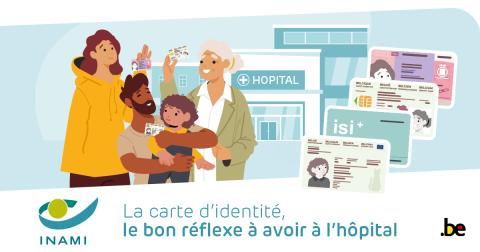Identity cards: the right thing to do in hospital

A hospital admission? An emergency? A doctor's appointment? Remember to bring your identity card and that of your children to the hospital.
For adults, this is the Belgian electronic identity card (eID) or electronic foreigner card, for children it is the Kids-ID or ISI+ card.
The electronic identity card ensures a smooth welcome and quick registration without administrative hassle. As a patient, you are sure of correct identification: the identity card gives access to your data and information about your treatment.
It also allows you to avoid having to pay a large part of the medical costs up front. The health insurance fund will then pay the costs reimbursed by the NIHDI directly to the hospital.
If, as a patient, you do not have your identity card at the time of consultation or admission, there are still alternatives for the hospital to verify your identity, such as a sticky note from the health insurance fund or the Itsme application.

Identity cards: the right thing to do in hospital
A hospital admission? An emergency? A doctor's appointment? Remember to bring your identity card and that of your children to the hospital.
For adults, this is the Belgian electronic identity card (eID) or electronic foreigner card, for children it is the Kids-ID or ISI+ card.
The electronic identity card ensures a smooth welcome and quick registration without administrative hassle. As a patient, you are sure of correct identification: the identity card gives access to your data and information about your treatment.
It also allows you to avoid having to pay a large part of the medical costs up front. The health insurance fund will then pay the costs reimbursed by the NIHDI directly to the hospital.
If, as a patient, you do not have your identity card at the time of consultation or admission, there are still alternatives for the hospital to verify your identity, such as a sticky note from the health insurance fund or the Itsme application.











